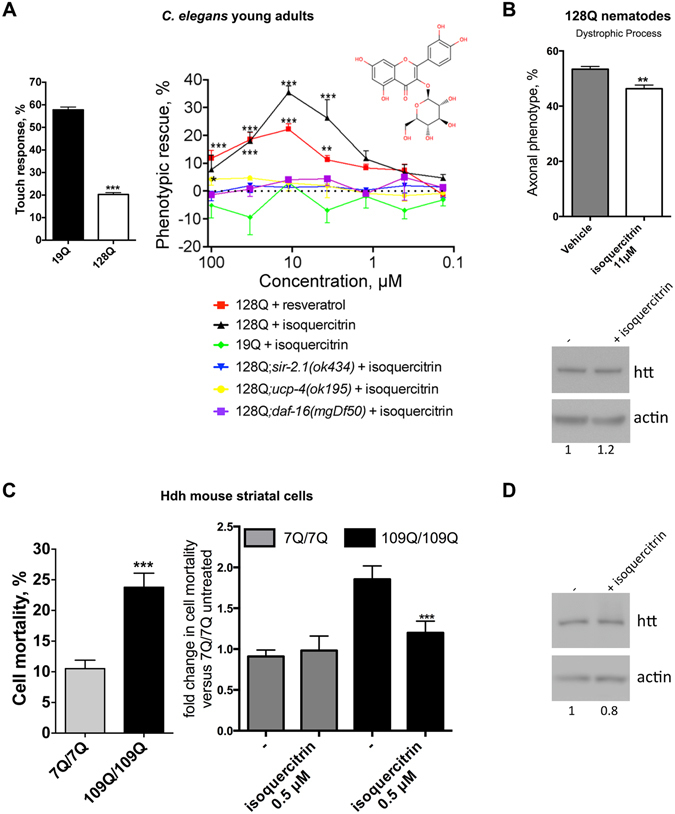Figure 3.

Protection of 128Q nematode neurons and mutant Htt mouse striatal cells by isoquercitrin. (A) The left panel show the level of touch response in 128Q and 19Q nematodes. The right panel shows that isoquercitrin suppresses the loss of touch response in 128Q nematodes, an effect that is lost in 128Q nematodes carrying a LOF mutation in sir-2.1, daf-16 or ucp-4. The dose-response curve for resveratrol is shown for reference. Data are mean ± SEM for > 200 nematodes in each group and a total of at least 4 independent experiments. The percentage of phenotypic (touch sensitivity) rescue was calculated as ((test − control)/(100 − control)*100). (A) negative value for phenotypic rescue means aggravation of the phenotype. *P < 0.05, **P < 0.01 and ***P < 0.001 versus DMSO controls. ns: not significant. (B) The upper panel shows that isoquercitrin (11.1 µM) reduces the percentage of 128Q animals with axonal dystrophy. Data are mean ± SEM for > 200 nematodes in each group and a total of at least 4 independent experiments. **P < 0.01 versus DMSO controls. The lower panel shows that isoquercitrin (11.1 µM) has no effect on 128Q transgene expression (cropped representative western blot: the corresponding full-length blot is shown in Fig. S5). (C) The left panel shows cell vulnerability upon serum deprivation of mutant versus normal Htt mouse striatal cells. ***P < 0.001. The right panel shows that isoquercitrin (0.5 µM) reduces the vulnerability of 109Q/109Q cells to cell death upon serum deprivation, with no effect in 7Q/7Q cells. Data are mean ± SD for > 150 cells in each group as tested in at least three independent experiments. ***P < 0.001 versus DMSO controls. (D) Isoquercitrin (0.5 µM) has no effect on Htt expression in 109Q/109Q cells (cropped representative western blot: the corresponding full-length blot is shown in Fig. S6).
